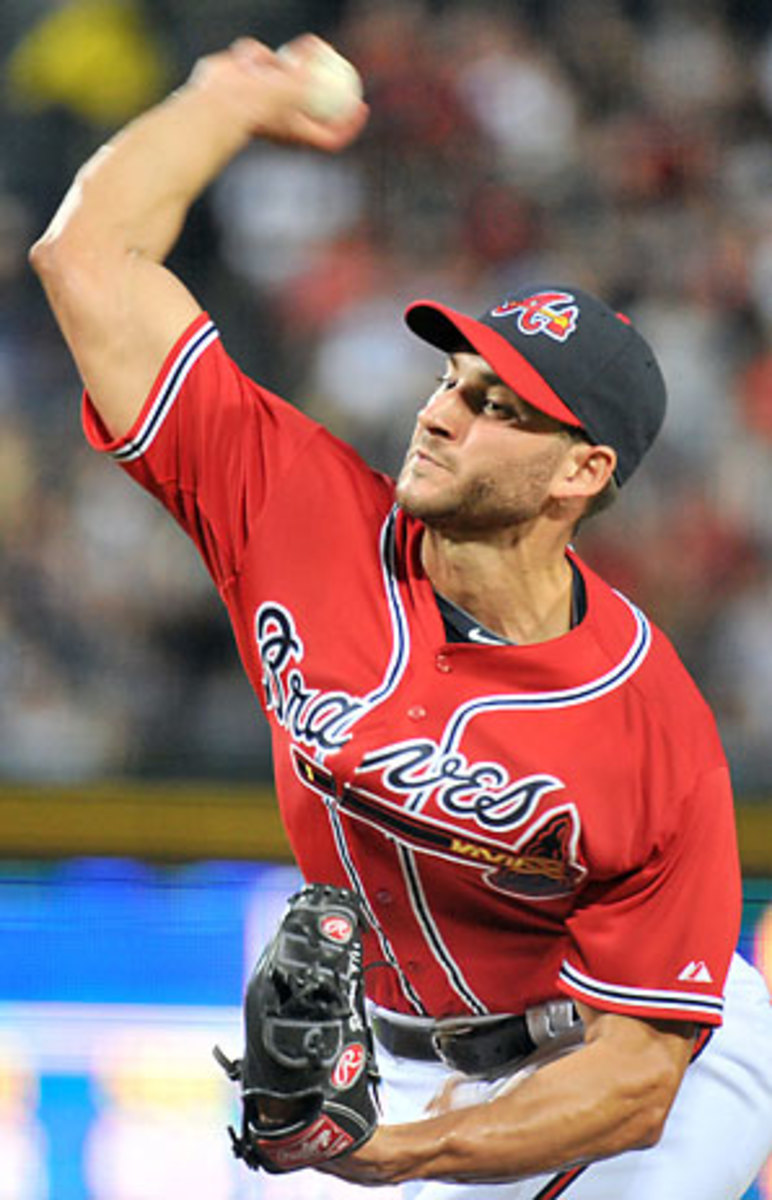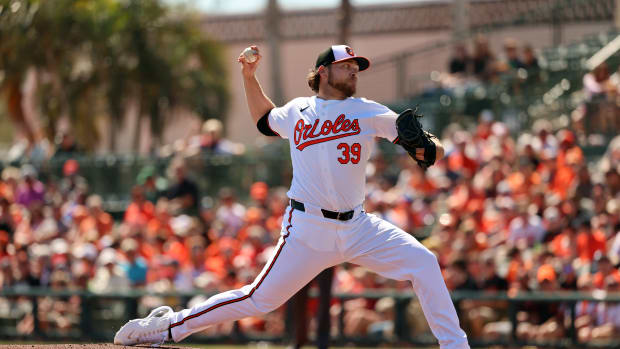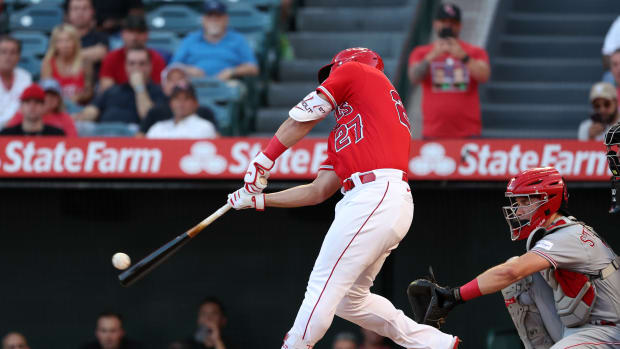
How Beachy's loss will impact Braves
Brandon Beachy needs Tommy John surgery, a big blow to the Braves, who are trying to get back to the postseason after last year's collapse. (Landov)
On Saturday, Braves starter Brandon Beachy left the game against the Orioles in the middle of the fourth inning, complaining of elbow soreness. Two trips to the doctor later, the team's worst fears have been realized: Atlanta announced on Wednesday that Beachy will undergo Tommy John surgery, ending his season and knocking him out of action for the first half of next year as well. It's a significant blow to the Braves, who at 37-32 are tied for second in the NL East and for the second Wild Card spot. They have enviable depth but their rotation has underperformed to date, and losing a pitcher currently tied with the Mets' R.A. Dickey for the NL ERA lead at 2.00 won't help Atlanta's quest for a playoff spot.
At first glance, it would appear that the Braves are well-equipped to weather the loss of the 25-year-old righty, given that four of their five starters have ERAs of 4.12 or below (the major league average is 4.15). A closer look, however, generates causes for concern. As a unit, the rotation's 4.11 ERA ranks 11th in the league, their Fair Run Average (runs per nine, adjusted for quality of defense, bullpen support and sequencing) of 4.82 ranks 13th, and their quality start rate of 41 percent ranks 15th, with Beachy (62 percent) the only starter delivering a rate above the league average of 54 percent. Tim Hudson and Tommy Hanson are at 50 percent, while the disappointing Mike Minor and rookie Randall Delgado are at 31 percent, though part of those numbers are attributable to manager Fredi Gonzalez's quick hook.
With veteran Jair Jurrjens, top prospect Julio Teheran, and swingman Kris Medlen Atlanta has multiple options to fill the open spot from within, and roughly six weeks to find an outside solution before the July 31 trade deadline.
Jurrjens will get first crack when he starts against the Red Sox on Friday. The 26-year-old righty earned All-Star honors last year, after going 12-3 with a 1.87 ERA in the first half thanks to a low .260 BABIP that propped up his meager 5.3 strikeouts per nine. Alas, he made just seven second-half starts due to a bone bruise in his right knee that sent him to the disabled list twice, and he was torched for a 9.37 ERA in four start this April before being sent down to Triple-A Gwinnett amid further concerns about his knee. He hasn't pitched all that well in the minors, posting a 5.18 ERA while striking out just 4.7 per nine and averaging an uncharacteristically high 1.1 homers per nine; his big league rates, by comparison, are 0.8 and 6.1 per nine.
Teheran, a 21-year-old blue chip prospect, has endured a "Jekyll and Hyde" season at Triple-A in which he has allowed 1.4 homers per nine but otherwise put up decent numbers. With a bit more consistency, the spot would be his to lose, but 21-year-old pitchers aren't known for their consistency. Medlen, a 26-year-old righty, was limited to two big league appearances last year due to August 2010 Tommy John surgery. His current 3.45 ERA passes muster, but his 4.9 strikeouts per nine is well off his pre-surgery rate of 6.9. He just returned from a stint in Gwinnett where he was stretched out as a starter, but the recent struggles of middle relievers Jonny Venters and Eric O'Flaherty have the Braves concerned about their bullpen as well.
More than anything, Beachy's injury is a bitter pill to swallow for a young pitcher who has quietly emerged as a top-flight starter over the past two years. Beachy wasn't drafted out of high school or college, both of which he attended in Indiana; he's the rare American non-drafted free agent to break through (international free agents, for whom there is no draft, do so all the time). He debuted in late September 2010 and struck out nine Nationals in his second big league start, then spent all of last season in the Braves' rotation save for a five-week stint on the disabled list. He struck out an eye-popping 10.7 batters per nine while delivering a 3.68 ERA over the course of 141 2/3 innings, the only knock being that his penchant for pitching deep in counts cost him innings. He averaged 4.08 pitches per plate appearance, the fourth-highest mark among pitchers with at least 120 innings, and so he lasted just 5.67 innings per start. This year, he was up to 4.16 pitches per plate appearance, and his strikeout rate had fallen to 7.6 per nine, but his batting average on balls in play fell even more precipitously, from .312 to .201, hence the low ERA.
The falling strikeout rate may have provided a hint that things were somewhat amiss. While he had lost less than 1.0 MPH off his fastball in terms of velocity according to the PITCHf/x data at BrooksBaseball.net, the swing-and-miss rate on his slider dropped significantly, from 21.3 percent to 10.7 percent, with his fastball and changeup swing-and-miss rates falling of as well. It's tempting to draw a connection between his May 22 shutout of the Marlins, in which he threw a career-high 122 pitches, and his injury; he had delivered one quality start out of five since then while walking 15 hitters in 27 innings.



































